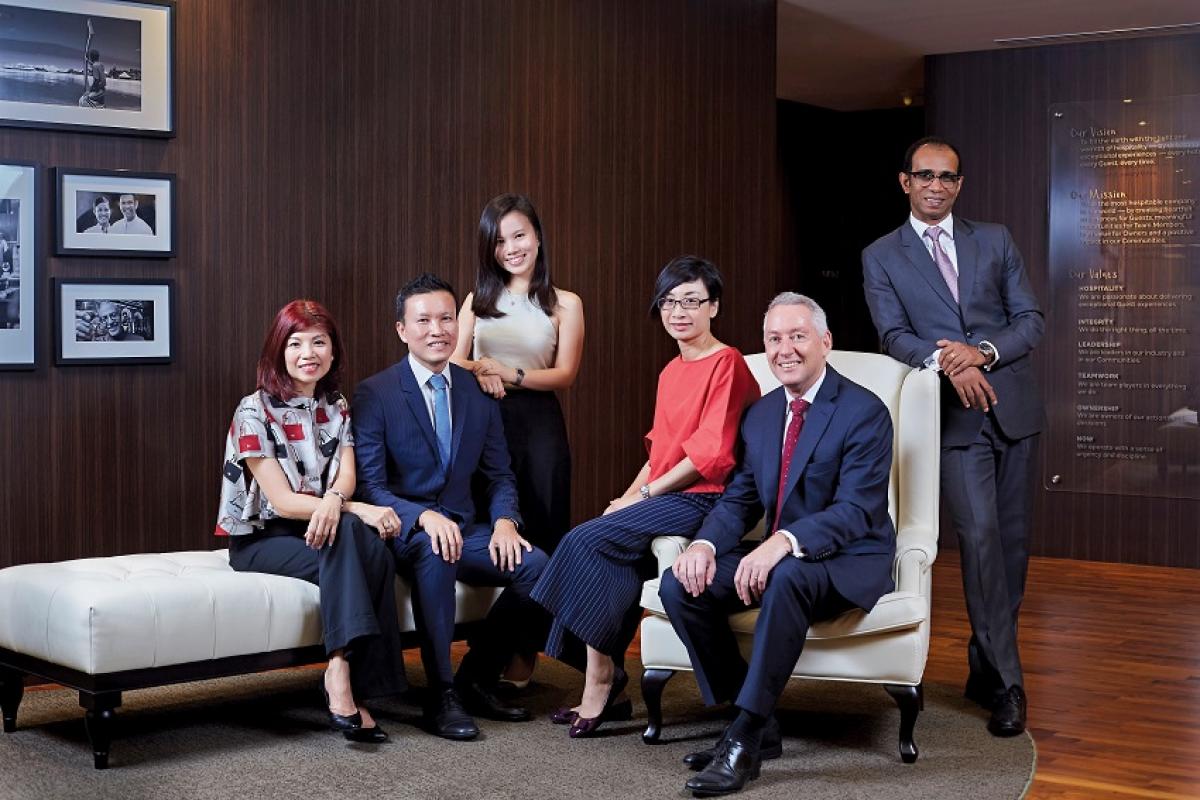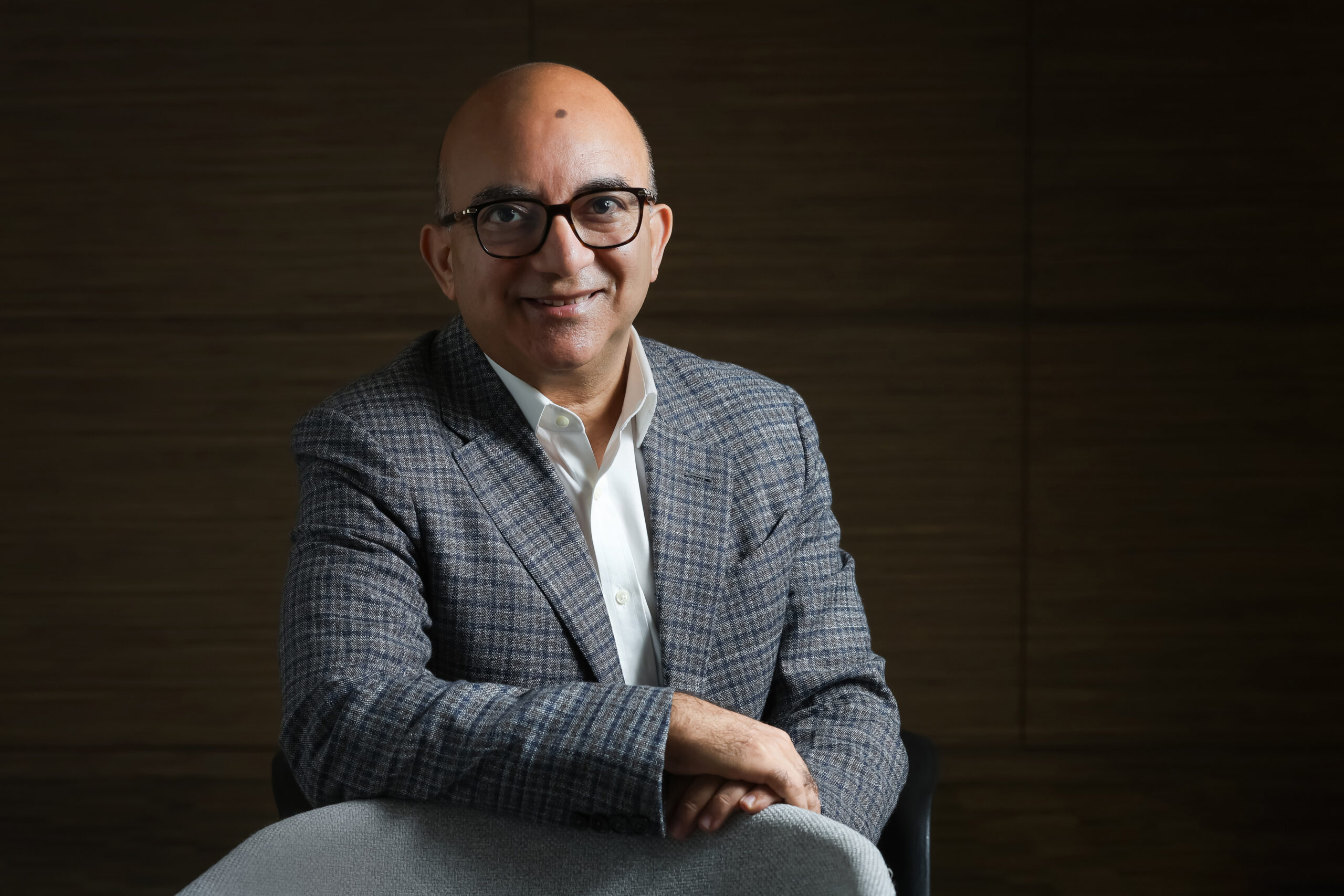How Hilton Asia-Pacific is paving the way forward
- Kelvin Ong

One of HRM Magazine’s cornerstones, the monthly HR Insider spread is an in-depth feature exploring the people management teams of some of the region’s most prolific organisations.
When US hospitality chain Hilton opened its first two properties in Myanmar – one in the capital city Nay Pyi Taw in October 2014, and the other in Ngapali three months later – it faced a multitude of challenges developing a reliable and consistent talent pipeline.
The Hilton brand might be one of the world’s most recognisable names in hospitality, but that counted for little among service professionals in emerging Myanmar. The usual hire, train, and place method of filling roles was not suitable for such a greenfield market entry.
A big reason for this was because many locals had never been exposed to the hospitality trade, says Brendan Toomey, the group’s vice president of HR in Asia-Pacific. So those required skills simply did not exist.
Furthermore, the hotel industry had a stigma attached to it, particularly among the older generation – as was the case in Sri Lanka and India, where Hilton operates many properties.
“In these countries, parents of young women are not so keen for them to work in our business,” Toomey says. That has a significant impact on the available talent. In Sri Lanka for instance, women make up only 10% of the Hilton workforce.
Developing a local talent pool
“One thing we realised very quickly up there in the north (of Myanmar), was there were no trained hospitality workers,” Toomey says.
This meant the HR team had no choice but to build up its own talent pool from scratch.
“We had to figure out a way to develop the future workforce for the country,” he says.
So in late-2015, Hilton launched the Hilton Vocational Training Centre at its Nay Pyi Taw property, with the blessings of the Myanmar government. The school offers a 24-month training programme in food and beverage operations, housekeeping, and front-office duties.
Upon successful completion of the programme, graduates receive a Diploma certified by the local Ministry of Hotels and Tourism.
The first batch of 28 trainees are expected to graduate in September this year, and Toomey says they will be appointed as ambassadors across Hilton’s upcoming properties in Bagan and Mandalay.
“When they first started, none of them could speak a word of English. Today they all speak fluent English and have regular jobs with regular income,” he shares.
“These people came from nothing. Their stories are just heartwarming.”
At a glance
Number of employees (Asia-Pacific): 42,000
Key HR focus areas:
- Recruitment
- Leadership development
- Learning and development
- Corporate social responsibility
Size of HR team (Asia-Pacific): 1,550
Local strategies
China is another country where recruitment has been an enormous struggle for Hilton, Toomey reveals.
“We’re essentially taking people from the countryside in many of the environments we are setting up; and many of them have never even set foot in a hotel previously,” he says.
To overcome these cultural and structural challenges, HR has had to tailor its programmes and initiatives.
For example, it has invested significantly in translating its various learning programmes and global employee surveys into multiple languages.
“We are absolutely making sure that in each different market, we are offering relevant staff programmes,” says Toomey.
In China, Hilton has also entered partnerships with some 18 schools and universities in a bid to attract and develop budding hospitality talent.
Classes conducted by Hilton are held regularly at these schools to develop students who are interested in careers with the organisation. This way, when students join one of its hotels, they already understand the company’s culture, its operations, and their potential career roadmap.
Toomey says such localised strategies are key to solving the brand’s talent shortages, especially because the hospitality industry is notorious for its low starting salaries.
“We’re not always the first business people want to join because we are unfortunately known for low pay,” he confesses.
“But what people don’t realise is once they get past the first level, the pay scales become much more competitive.”
Boosting the EVP
Toomey admits that managing some 42,000 employees across 185 Hilton-branded properties in 21 countries regionally has not been an easy task.
While he acknowledges the company is unable to compete with other industries in terms of initial compensation, it can attract entry-level talent by providing other well-marketed benefits.
The HR team has boosted the hotel’s employee value proposition (EVP) through well-defined and well-structured opportunities that Toomey summarises as “great rewards, great careers and great environment”.
One focus area involves ensuring all new employees receive a memorable welcome from the moment they come through its doors. Toomey says Hilton has launched a massive ongoing global project aimed at building the best onboarding experience for team members.

“We ask ourselves: ‘What does that experience look like and feel like for team members? Is there Wi-Fi for them once they come in? Is there music playing? What are their uniforms like? What are their meals like in the dining room? What do the locker rooms look like?’.”
He cites wardrobe to be a key element when it comes to developing the “environment” side of the equation. Far from a secondary though, Hilton is in fact partnering with sporting apparel company Under Armour to create new uniforms made out of cooler, more breathable materials.
In certain roles that require heavy manual lifting, such as banquet operations and even housekeeping, the existing uniforms are not light enough. Staff often have to work for hours through their discomfort.
Leadership is another key aspect of the employee experience, with Hilton believing a highly-engaged workforce is the result of great leadership.
HR has even introduced a leadership index to measure the effectiveness of the hotel chain’s business leaders.
“It’s about giving all our team members a great boss. Great bosses will mentor them, coach them, and give them opportunities to grow and develop,” Toomey states.
“Most people don’t leave companies, they leave bosses. That’s said time and time again, and it’s still so true.”
Elevate, engage, excel
This focus on effective leadership is why the Hilton talent management team places such strong emphasis on its leadership development programmes. It also ensures employees across all levels are given a fair opportunity to further their careers.
Similarly, a progressive career development framework forms a major piece of the overall jigsaw, says Toomey. Besides championing employees, it fulfills the company’s succession planning objectives.
“It is about making sure our programmes help to create opportunities for team members at different career stages to grow with us,” he says.
In light of this, the company has divided leadership development into three stages: “elevate”, “engage” and “excel”.
The elevate level is dedicated to mapping out careers for young, entry-level supervisors and managers.
This level is made up of mostly millennials, who Toomey says seek dynamic jobs and portfolios that allow them to work on different things from time to time.
This generation also wants to be engaged with meaningful projects, whether it is community or work-based. And most importantly, they need to know what their next job opportunities with the company are going to be.
Otherwise, Toomey says, they might “join the hotel down the road that is willing to offer them more pay”.
“So it’s really about making sure they are aware of their career paths, and that everyone at this level has access to some form of learning and development.”
This could be a management trainee programme lasting between 12 and 18 months, or something from the Myanmar Vocational Training Centre.
The “engage” portion sees HR focusing on identifying high-potential mid-level managers, and developing these individuals into future senior business leaders.
High-potentials at this level are further split into two groups under what is called the Shine programme: Shine 1 and Shine 2.
Shine 1 is dedicated to developing director-level positions under the various general managers, while Shine 2 will groom the next generation of general management.
“Excel”, the highest stage, is aimed at ensuring senior business leaders at the very top of the hierarchy are equipped with the skills needed to stay relevant.
Examples of programmes at this tier are the Vice President Excellence Leadership Development Programme, and the Women in Leadership Excellence Programme. The latter sees the company sending many of its best female leaders in Asia to the US for a week of intensive learning.
Toomey says all three components have been very critical to Hilton’s success globally, where there has been a high level of promotion from within the company. As a result, attrition rates in Asia-Pacific have also fallen.
He believes these initiatives have also contributed to Hilton being named the third best multinational to work for in Asia by the Great Place to Work Institute.
“It hits all the touch points for hotels and the corporate side as well. That’s where we have spent most of our energy in the last three years – just getting those programmes tailored specifically for the different needs and groups,” he explains.
Changing 1 million lives

At the world Economic Forum’s annual meeting in 2014, Hilton Worldwide announced a global commitment to impact the lives of at least 1 million young people by 2019, all through helping them to reach their full potential.
Since then, the initiative has opened doors for hundreds of thousands of young people by preparing them for careers in the hospitality industry through mentorships and apprenticeships with Hilton leaders.
Brendan Toomey, vice president of HR at Hilton Asia-Pacific, says the hospitality group hopes to reach out to thousands of unemployed youth, particularly in emerging markets such as China and India.
Research shows that many young people today face a grim socioeconomic reality, with more than 71 million worldwide unemployed and nearly 290 million – more than a quarter of our planet’s young people – neither working nor studying.
Simply creating more jobs will not be enough to address the issue if young people are not equipped with the range of skills needed to succeed in today’s complex marketplace, Toomey says.
“There is a high unemployment level of youths around the world, and we want to help bring that down,” says Toomey.
In developing Asian countries, where the hospitality industry tends to be viewed negatively, such youth-centred programmes are also opportunities for Hilton to open up its doors for people to have a look inside, understand the hotel business, and hopefully change their mindsets.
“When we run our youth programmes, we are inviting parents to come with their children to see what goes on behind the scenes and what are the different types of jobs we offer – whether it is in finance, HR, or digital marketing.”
One of HRM Magazine’s cornerstones, the monthly HR Insider spread is an in-depth feature exploring the people management teams of some of the region’s most prolific organisations.






